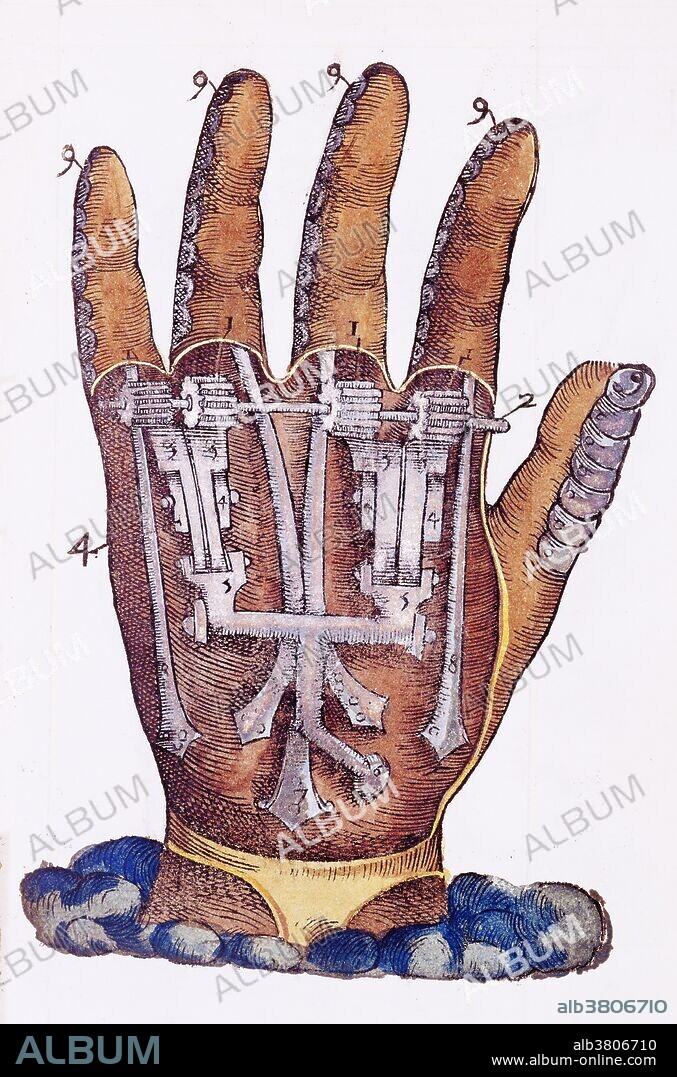alb3806710
Artificial Hand Designed by Ambroise Pare, 1564

|
Zu einem anderen Lightbox hinzufügen |
|
Zu einem anderen Lightbox hinzufügen |



Haben Sie bereits ein Konto? Anmelden
Sie haben kein Konto? Registrieren
Dieses Bild kaufen

Titel:
Artificial Hand Designed by Ambroise Pare, 1564
Untertitel:
Siehe automatische Übersetzung
Woodcut, 1564. Hand with mechanical apparatus by Ambroise Pare. Pare (1510-1590) was a French surgeon, anatomist and inventor. He was royal surgeon for kings Henry II, Francis II, Charles IX and Henry III and is considered one of the fathers of surgery and modern forensic pathology. He was a leader in surgical techniques and pioneered modern battlefield wound treatment. Battlefield medicine is the treatment of wounded soldiers in or near an area of combat. Civilian medicine has been greatly advanced by procedures that were first developed to treat the wounds inflicted during combat. Pare introduced the ligature of arteries instead of cauterization during amputation. He believed that phantom pains occurred in the brain. He contributed to the practice of surgical amputation and the design of limb prostheses.
Persönlichkeiten:
Bildnachweis:
Album / Science Source / Wellcome Images
Freigaben (Releases):
Model: Nein - Eigentum: Nein
Rechtefragen?
Rechtefragen?
Bildgröße:
3312 x 5010 px | 47.5 MB
Druckgröße:
28.0 x 42.4 cm | 11.0 x 16.7 in (300 dpi)
Schlüsselwörter:
 Pinterest
Pinterest Twitter
Twitter Facebook
Facebook Link kopieren
Link kopieren Email
Email
